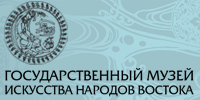
The last issue of 2007 is unusual. A substantial part of it is allotted for the “Korean Scenes” section, which features the articles by Russian scholars and literati, who tell our readers about the outstanding phenomena of ancient Korean culture, significant events in the history of Korean people, and about the present-day life of the Republic of Korea.
Korean Scenes
The section opens with the greetings sent to the editors of the Oriental Collection magazine and to the Russian State Library by Li Gyu-hyen, Ambassador Extraordinary and Plenipotentiary of the Republic of Korea to Russian Federation, and Yim Sung-joon, President of the Korea Foundation.
Tatyana Simbirtseva. “Amur Naze”. The article narrates about the first images of Korea on Russian geographical maps, about the first description of Korea made by Nikolai Spathari, Russian ambassador to China, and about the first references of Russia in Korean documents (middle 17th century).
Lyudmila Kireeva. In the Circle of Life and Existence. For many years the author of this article has been studying the world of things, which form an integral part of traditional Korean culture. Fan, ink-stone, buckets, spools, thimbles, hand lanterns – all these and other things were not only practical, but also beautiful and elegant.
Lev Kontsevich. Instruction to the People on the Proper Pronunciation. Korean alphabet is the pride of Korean people, the highest achievement of Medieval Korean culture. The author describes the time when the alphabet was created, the process of its development, and the first texts written using this alphabet.
Yulia Tikhonravova. One Hundred Theatres on Taehangno Street. The Republic of Korea, unlike Russia and many other countries, does not have the repertory theatre; instead, here are numerous companies that put up performances on various stages. Nevertheless, the art of theatre is indeed flourishing here: the Koreans are literally rushing to theatres, opera houses, and concert halls.
Kirill Yermakov. “Magnificent Fortress” of Wan Chongjo. The Hwaseong Fortress was built in the reign of King Chongjo (late 18th century). Contemporary authors called it “the model for later generations”, and this is not an exaggeration. Designers of the fortress used various achievements of Korean and foreign art of fortification.
Vladimir Tikhonov. To Andon, the Place of Yi Hwang. One the prominent Confucian thinkers, Yi Hwang (16th century) was a founder of the Dosan Academy in the small town of Andong, where several generations of zealous Confucians have received their education. After 500 years, the author visited the place and found out that one can still feel the spirit of Confucian didacticism in the renovated buildings of the Academy.
Adelaida Trotsevich. During the Diplomatic Service... The libraries of Saint Petersburg keep two significant collections of old Korean books. These books were collected in the 19th century by Russian, British, and German diplomats. Their focus of interest was quite wide: besides official publications, text-books, books on commerce and science, they also bought works of prose and poetry, some of which are now unique.
Sergey Kukushkin. “Three Baskets” from Haeinsa Temple. Among the thirty East Asian versions of “Tripitaka”, collection of Buddhist scriptures, the version made in Korea is considered to be the oldest of full collections, most accurate and most beautiful calligraphically. The woodblocks, carved in the 13th century and now carefully stored in Haeinsa Temple, are subject to thorough research and are converted into digital form.
Leonid Yakimovich. Entertainment for Singles. Wide expansion of mobile digital multimedia broadcasting in the Republic of Korea has really changed the people’s lifestyle, interests, and preferences. It suffice to say that and average Korean spends one and a half times more time watching mobile television than reading newspapers.
Irina Yeliseeva. A Cabinet Made of Empress Tree as a Dowry. The national Korean furniture is the outstanding and original artistic phenomenon, related to the specific features of traditional house and lifestyle of its dwellers. Cabinets, whatnots, tables, caskets, fitments, and decorations are not only works of refined skill, but also the signs of traditional culture.
Roza Dzharylgasynova. The Unfading Beauty of Koguryo Wall Paintings. The monumental wall paintings of the toms of ancient Korean kingdom of Koguryo is the outstanding treasure of culture and art of Korean people, an integral part of global heritage. The paintings, which reproduce scenes from the life of people gone long ago and reflect their complex inner life, have a great historical value.
Yulia Tikhonravova. A Tiger on Red and an Eagle on Blue. The author shares her observations of the educational system in the Republic of Korea and about schoolchildren and varsity students who “burn the midnight oil”. Education in the country becomes more and more prestigious, whereas its quality is about to reach international level.
Denis Samsonov. Day of Hungry Spritis in the Town of Miryang. Seoul is the symbol of modern, international, dynamic country, whereas in the province one can meet the charming face of traditional Korea. The author visited the small town of Miryang, where he witnessed a rural festival, which have retained its traditional features for many centuries.
Dmitriy Yeliseev. Black Ink on White Paper. The author, Doctor of Letters, was one of the first Russian scholars who started studying and publishing Korean manuscripts and block-printed books with works of narrative prose. The article tells the reader how the manuscript book is created, about the necessary materials and equipment, and about the role of manuscript book in the development of culture.
The articles presented in the “Korean Scenes” have a good supplement, a review of Web resources on the temples in the Republic of Korea, published in our traditional “Orientnet” section.
The Land of Orient
Yevgeniy Matochkin. The Deities of “Gold-Guarding Vultures”. The author, archaeologist and scholar of art, tells about his discovery, the remarkable petroglyphs from the Bosh-Tuu Valley (Altai) that represent zoomorphic and anthropomorphic characters, fantastic creatures, and mysterious symbols. Expressive works of Miroslav Chevalkov, an artist from Altai who have recreated the life of Siberian Scythians, supplement the article.
Viktor Solkin. The Sacred Stones of Akhmim. Tourists do not favor Akhmim, the ancient town in the Upper Egyptian Sohag Governorate. This could be the reason, why this place still keeps the spirit, which have been for ever destroyed by tourists in Luxor and Aswan, – the fragile, pristine local culture, where ancient Egyptian ruins are found side by side with Roman sanctuaries, huge necropoleis that still await their scholars, and remarkable monuments of early Christianity.
Please e-mail your wishes, suggestions and comments to the following address: orientnet@rsl.ru.
You can find the summaries of the previous issues online, by visiting our section of the Russian State Library Web-site: http://orient.rsl.ru/en/






